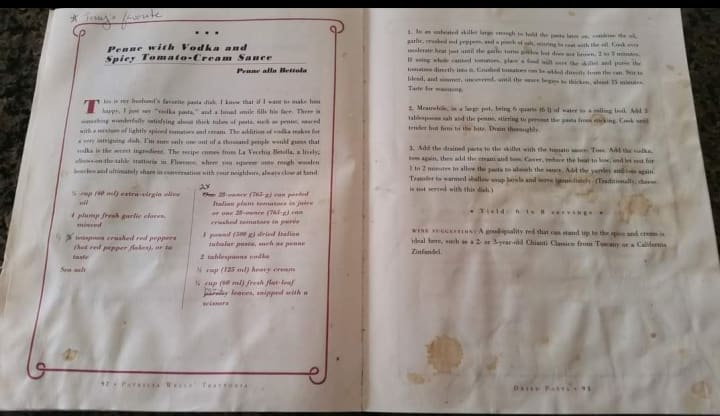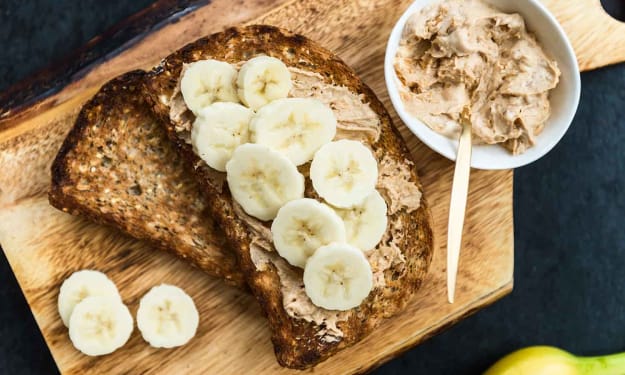Memories, Mourning, and Vodka Pasta
How one of my childhood favorites became an act of remembrance

As a foodie and a kid-at-heart, I’m a big fan of the movie Ratatouille. It takes the Disney staple of an unlikely hero with a dream, then adds beautiful animation, the magic of Paris, and the soulful experience of a delicious meal. In other words, it's my personal kryptonite. My favorite scene is when food critic Anton Ego first tastes Remy's ratatouille. Pinning a notoriously judgmental food critic against a rat chef presents a David and Goliath battle with the odds against our protagonist. But, when Ego takes his first bite, it’s magic.
The taste of Remy’s dish transports Ego back to his childhood. No longer a haughty critic, Ego is a little boy with knee socks and a tearful sniffle. His mother is full of tenderness—from the steaming bowl of ratatouille she serves her son to the comforting hand she puts under his chin. Young Ego smiles at his first bite and we return to his adult self who, after a moment of astonishment, gleefully enjoys his meal.
I like this scene for a lot of reasons. I enjoy the little details like young Ego’s scraped knees and his mother’s copper pot. I appreciate how full of emotion the wordless flashback is. What I really love is the depiction of how a bite of a nostalgic food can sweep you up and turn you into a child. I feel the exact same way when I eat my dad’s famous vodka pasta.

People use the word “famous” for a lot of dishes. You can hardly go two blocks in New York without seeing yet another “famous” pizzeria. But, back in my neck of the woods in the suburbs of Seattle, my dad’s penne pasta with vodka sauce was famous. Just mentioning that my dad was working on a batch was enough to encourage my friends to ditch their plans and come to my house for dinner. Even my best friend (a notoriously picky eater) would come running over for a hearty bowl of pasta and ask for seconds.
We didn’t call it vodka pasta back then—the phrase sounded foreign and adult in the worst way possible. These days, vodka isn't such a strange, grown-up word to me, but I still never call the dish by its original name. No offense to Patricia Wells and her fantastic cookbook Trattoria, but "Penne with Vodka and Spicy Tomato-Cream Sauce" hardly rolls off the tongue. The fact is that my dad made the recipe his own with additions, notes, and tomato stains on the pages. He created something new and the resulting dish—Dennis Pasta—bears his name long after his passing.

My dad made a lot of amazing food while I was growing up, but I think he knew what he was doing when he gave this particular recipe his name. Somehow, all of the flavors come together as a perfect metaphor for how it felt to be around him. The cream sauce is the food equivalent of a bear hug. It’s hearty, sweet, and has a touch of cayenne for extra heat. With fewer than ten ingredients, it’s not a fussy dish. That said, it’s a bit more complex than one might think. The original basis for the recipe suggests a simmering time of only fifteen minutes. But a truly great sauce is a labor of love. Our well-worn copy of the cookbook includes a handwritten suggestion to double the canned tomatoes and there’s an unwritten rule to include a can of tomato paste as well. These additions make for a thicker sauce that takes at least an hour and a half to cook. Traditional wisdom dictates that it’s best to start when your daughter gets home from school so the whole house smells like garlic and tomatoes when your wife gets home from work.
Once the sauce is simmering, it doesn’t need constant attention. A quick check-in during every other commercial break on the TV will suffice. Taste-testing is crucial—including your daughter’s friends is the only way to ensure quality control of both the sauce and the pasta itself. The final burst of freshness comes from basil. You could use fancy herb-scissors but, somehow, putting the leaves in a coffee mug and snipping with regular scissors does the best job. The result is nothing short of delicious. It’s comfort food that tastes like reminiscing about a favorite memory, telling your favorite joke, or reuniting with an old friend all at once.

I haven't been able to act as my father's sous-chef for years, but Dennis Pasta still gives me the fuzzy feelings of home. Whether making it for friends or family, the fan-favorite recipe always brings warmth and happiness. Most recently, I made a batch in memory of my dad’s birthday. Making a massive amount of pasta in my tiny studio apartment was a bit of a tight squeeze, but it was worth it. Dipping a taste-testing spoon into the simmering sauce gave me those Ratatouille flashbacks that took me back to cooking with my dad. In a bite, I could feel all of my dad’s joy, laughter, and love.
It’s been almost ten years since my dad passed away and I still miss him terribly. He didn’t get to see me graduate high school or move across the country to the city where he met my mom. There are times when I could really use a bear hug from my dad. A bowl of vodka pasta isn’t quite the same, but it's still a great way to surround myself with his memory. So, in the spirit of my dad, I bring you the recipe for Dennis Pasta. May it bring as many fun times as its namesake (and that’s a high bar).

Dennis Pasta
¼ cup (60 ml) extra virgin olive oil
4 or more fresh garlic cloves, minced
1/3 ¼ teaspoon crushed red peppers or cayenne pepper
One 2x 28 ounce (765 g) can peeled Italian plum tomatoes in juice
One 12 oz can tomato paste
1 pound (500 g) dried Italian tubular pasta, such as penne
2 tablespoons vodka or to taste
½ cup (125 ml) heavy cream consult taste testers
¼ cup (60 ml) fresh flat-leaf parsley basil, snipped with scissors
1. In an unheated pot large enough to hold the pasta later on, combine the oil, garlic, cayenne, and a pinch of salt, stirring to coat with the oil. Cook over moderate heat just until the garlic turns golden but does not brown, 2 to 3 minutes. If using whole canned tomatoes, place a food mill over the skillet and puree the tomatoes directly into it. fish them out with a wooden spoon and cut them on the spoon one at a time. Crushed tomatoes can be added directly from the can. Stir to blend, and simmer, uncovered, until the sauce begins to thicken, about 15 minutes. 1 ½ + hours. Stir occasionally. Taste for seasoning.
2. Meanwhile, in a large pot, bring 6 quarts (6 l) of water to a rolling boil. Add 3 tablespoons salt and the penne, stirring to prevent the pasta from sticking. Cook until tender but firm to the bite. Check with pasta tasters. Drain thoroughly.
3. While the pasta is cooking, add the vodka, toss, then consult your tasters about adding the cream and toss again. Add pasta to the sauce once it’s cooked. Cover, reduce the heat to low, and let rest for 1 to 2 minutes to allow the pasta to absorb the sauce. Add the parsley basil and toss again. Transfer to warmed shallow soup bowls and serve immediately. (Traditionally, cheese is not served with this dish but your wife disagrees with this tradition.) Serve with garlic bread.
Yield: 6 to 8 servings
Wine Suggestion: A good-quality red that can stand up to the spice and cream is ideal here, such as a 2- or 3-year-old Chianti Classico from Tuscany or a California Zinfandel.
About the Creator
Jamie Lutz
I'm a New York-based word nerd with a passion for media writing. I love writing about superheroes, literature, and all the nerdy things in between!







Comments
There are no comments for this story
Be the first to respond and start the conversation.